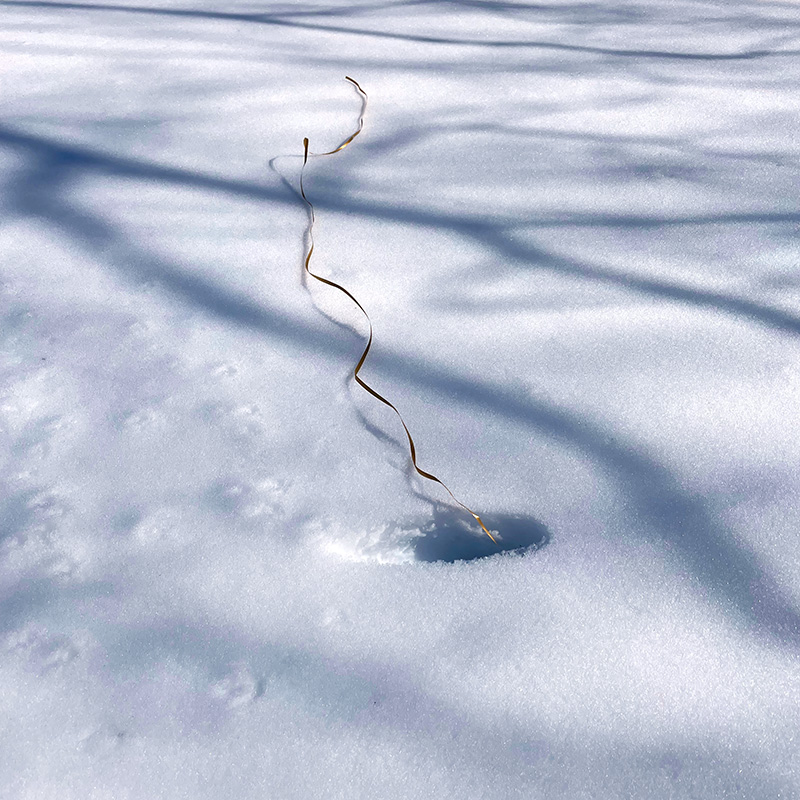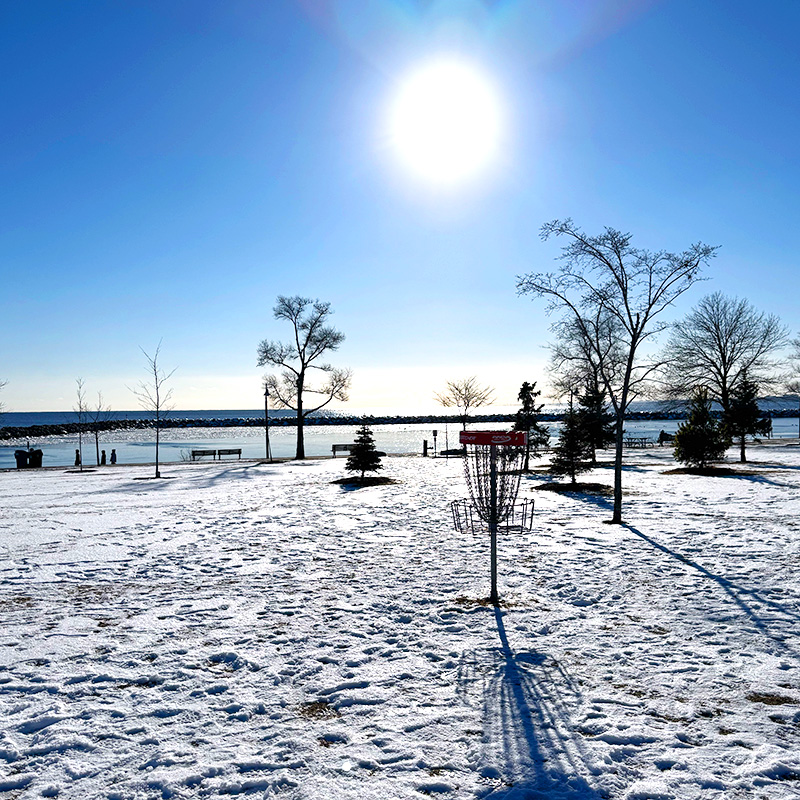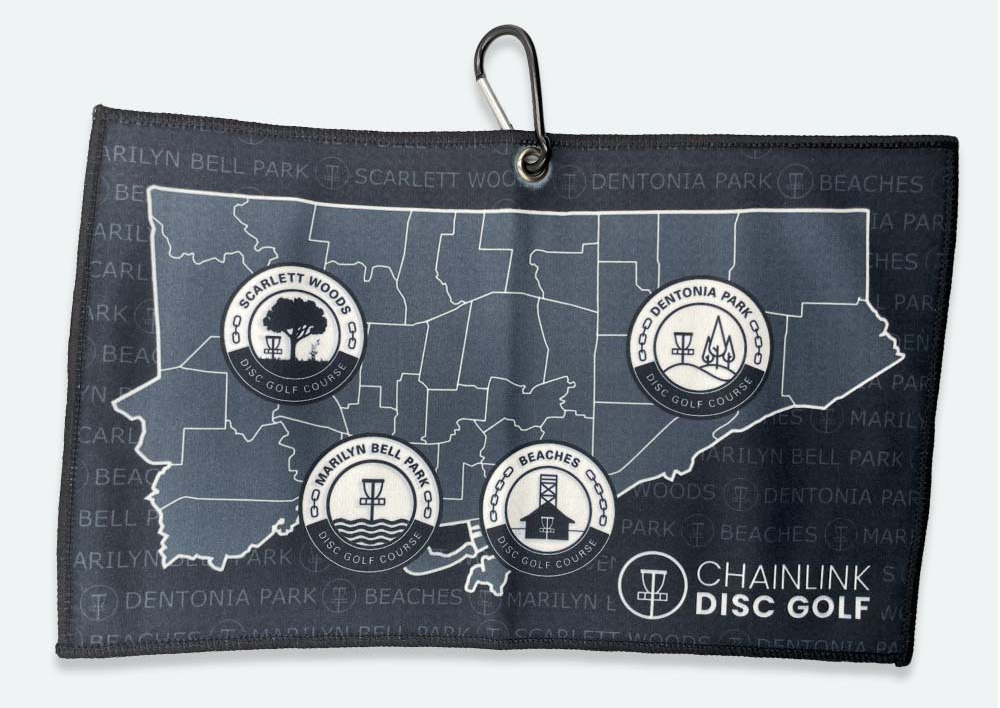Winter doesn’t mean you have to stop playing disc golf. With the right preparation, you can enjoy the game even in snowy conditions. However, cold temperatures, snow-covered courses, and icy tee pads present unique challenges. By following these tips, you can keep playing safely and effectively throughout the winter months.
1. Use the Right Discs

- Bright-colored discs are much easier to spot in the snow. White or light-colored discs blend in and can be nearly impossible to find.
- Softer, gummy plastics are easier to grip and survive better in cold temperatures because they maintain flexibility. Stiff plastics can become brittle and crack upon impact with trees or frozen ground.
- Your discs will fly differently in winter conditions. Keep In Mind:
- Denser Air in Cold Weather: Cold air is denser than warm air, which increases drag and lift on a disc. This added resistance slows down the disc more quickly and reduces turn, making it behave more overstable.
- Stiffer Plastic in Low Temperatures: Many disc golf plastics become stiffer in cold temperatures, reducing their ability to flex and "grip" the air. This stiffness can make a disc fly with less turn and more fade, again contributing to overstable flight.
- Reduced Glide: Denser air and stiffer plastic can also decrease a disc’s glide, meaning it won’t carry as far or turn as much as it does in warmer conditions.
2. Dress for Cold Weather
- Layering is key. Wear a moisture-wicking base layer to keep sweat away from your skin, an insulating middle layer for warmth, and a windproof outer layer to block cold air and precipitation.
- Waterproof boots with good traction help keep your feet dry and prevent slipping. If playing in deep snow, consider taping around the top of your boots to keep snow from getting in.
- Gloves or mittens with hand warmers will help keep your hands from getting too cold. Some players prefer fingerless gloves or quick-release mittens so they can maintain a good grip while throwing.
- A heated vest can provide extra warmth while keeping your arms free for a full range of motion.
3. Keep Your Discs Dry
- Warm discs attract snow, which then melts and refreezes, making them difficult to grip. Storing your disc golf bag in a cold place, like a garage or car trunk, the night before your round helps prevent discs from collecting excess moisture.
- Carry multiple towels to wipe off discs between throws. Keep one in your pocket so it stays warm and dry.
- A sled is useful for carrying your bag and gear, keeping everything elevated and away from the snow. This also prevents your bag from soaking up moisture from the ground.
4. Ensure Safe Tee Pads
- Tee pads can quickly become icy and slippery, increasing the risk of falls. Bringing a small shovel or broom to clear snow before throwing can make a big difference.
- If the tee pad is still icy, consider throwing from the side or from packed snow nearby. A stable stance is more important than perfect footing.
- Footwear with strong grip, such as hiking boots or trail shoes, helps prevent slipping. If conditions are particularly icy, adding ice cleats can provide even more traction.
5. Track Your Discs
- Snow makes it harder to track disc flights, especially in wooded areas where trees disrupt visibility. Keep an eye on your disc from the moment it leaves your hand until it lands.
- Mark landmarks where your disc lands, such as nearby trees or benches, to help narrow your search area.
- Try to limit walking around the landing zone before finding your disc. Fresh snow preserves impact marks, but footprints can quickly cover them up.
- Attaching ribbons to your discs can make them easier to locate in deep snow. (See above) The ribbon will stay visible above the surface even if your disc buries itself.
- Another option is using carpenter’s chalk, which leaves a bright, powdery trail when the disc lands, making retrieval much easier.

6. Stay Hydrated
- Dehydration is just as much of a risk in winter as it is in summer, but because you’re not sweating as visibly, it’s easy to forget to drink water.
- Lukewarm water or herbal tea is a great option to keep you hydrated and help maintain body heat.
- Alcohol may feel like it warms you up, but it actually increases heat loss, making you more susceptible to the cold.
7. Play Smart
- Winter conditions can make courses play differently, so adjust your strategy. Instead of aggressive shots, prioritize accuracy and keeping the disc in sight.
- Playing shorter, controlled throws reduces the risk of losing a disc in deep snow.
- Stick to familiar courses where you already know the layout. This minimizes the risk of getting lost or spending too much time searching for discs.
- Watch for signs of frostbite and hypothermia. If you start feeling numbness, tingling, or shivering uncontrollably, it’s time to warm up.
With these tips, you can keep playing disc golf all winter long while staying safe, warm, and in control. Embrace the challenge, enjoy the beauty of snowy landscapes, and keep your game sharp no matter the season!

